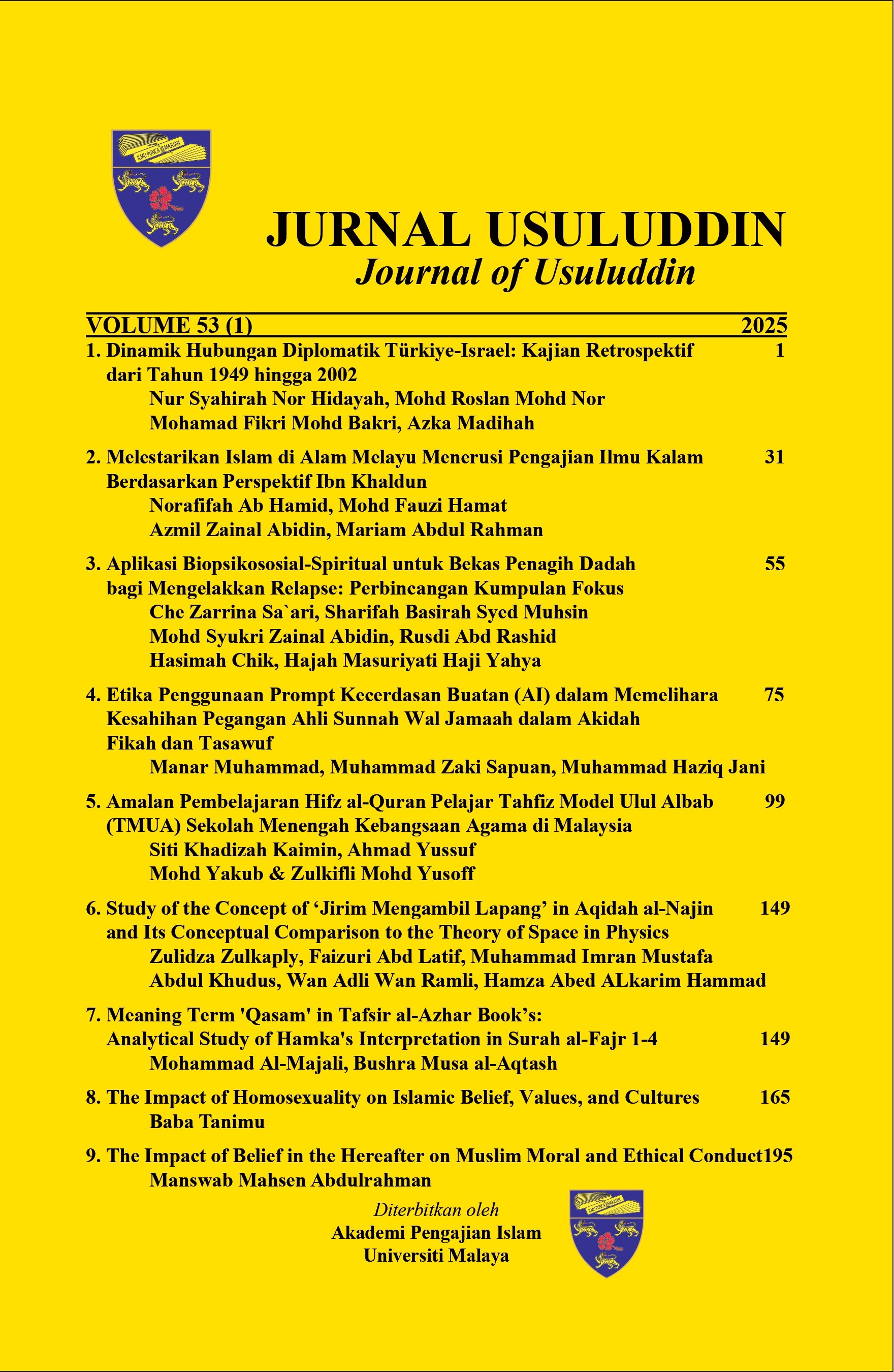Study of the Concept of ‘Jirim Mengambil Lapang’ in Aqidah al-Najin and Its Conceptual Comparison to the Theory of Space in Physics
Main Article Content
Abstract
This article explores the concept of ‘Jirim Mengambil Lapang’ (Matter Occupies Space) as presented in Aqidah al-Najin and compares it with the scientific understanding of space in classical and modern physics. The theological perspective in Aqidah al-Najin asserts that matters (jirim) inherently occupies space, distinguishing creation from the Creator (al-Khaliq) that transcends spatial limitations. In contrast, physics has evolved from Newtonian mechanics, which defines space as an absolute framework, to Einstein’s relativity, where space is dynamic and influenced by mass and energy. Quantum mechanics further challenges classical views by proposing that space may have discrete properties at microscopic scales. Using a qualitative and comparative approach, this study conceptually examines the similarities and differences between these perspectives, highlighting their epistemological foundations, methodologies, and implications for understanding existence and reality. The findings reveal that while Islamic theology and modern physics approach space from different paradigms one rooted in metaphysical principles and the other in empirical observation both acknowledge space as a fundamental aspect of reality. This study contributes to the broader discourse on the relationship between science and religion, offering insights into how theological and scientific frameworks can coexist and enrich each other in understanding the nature of space and existence.
